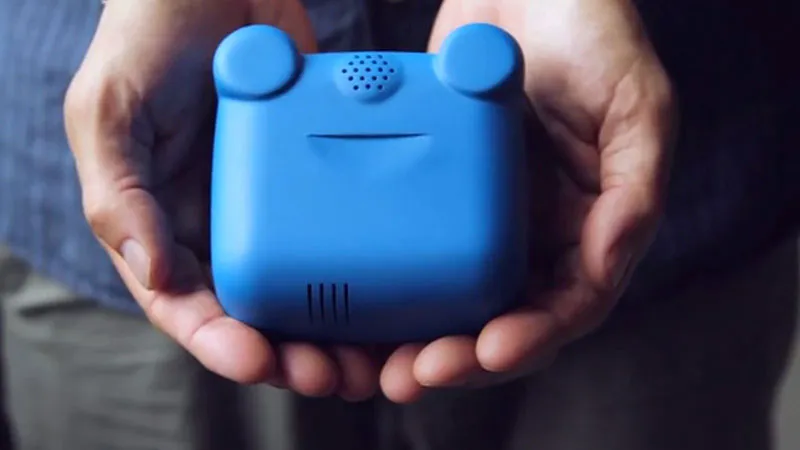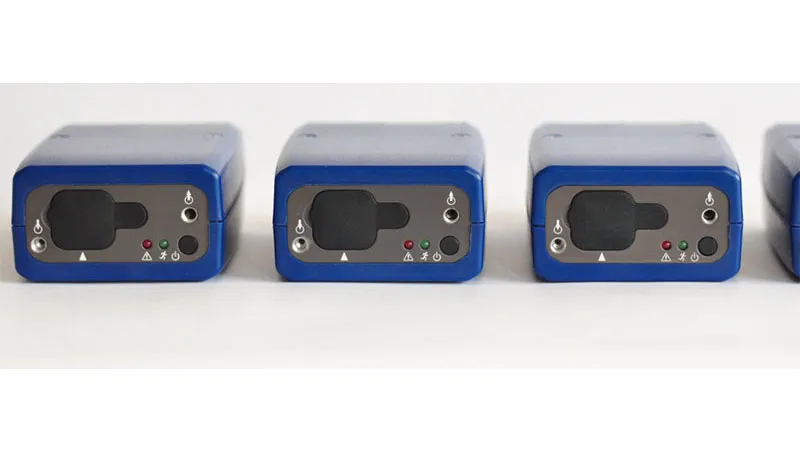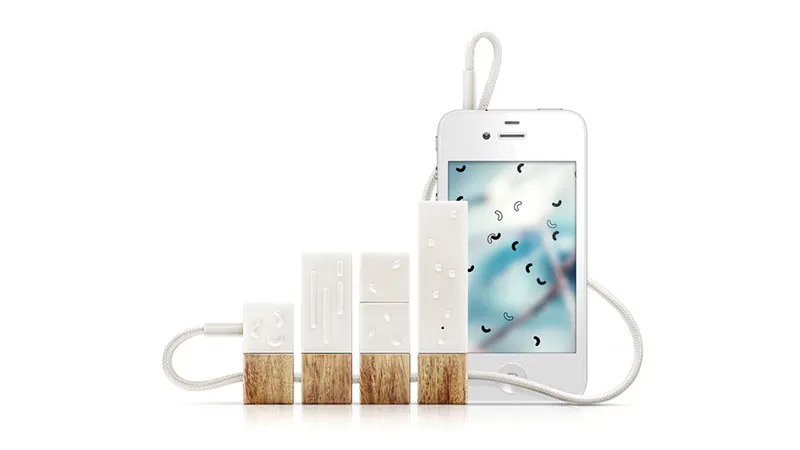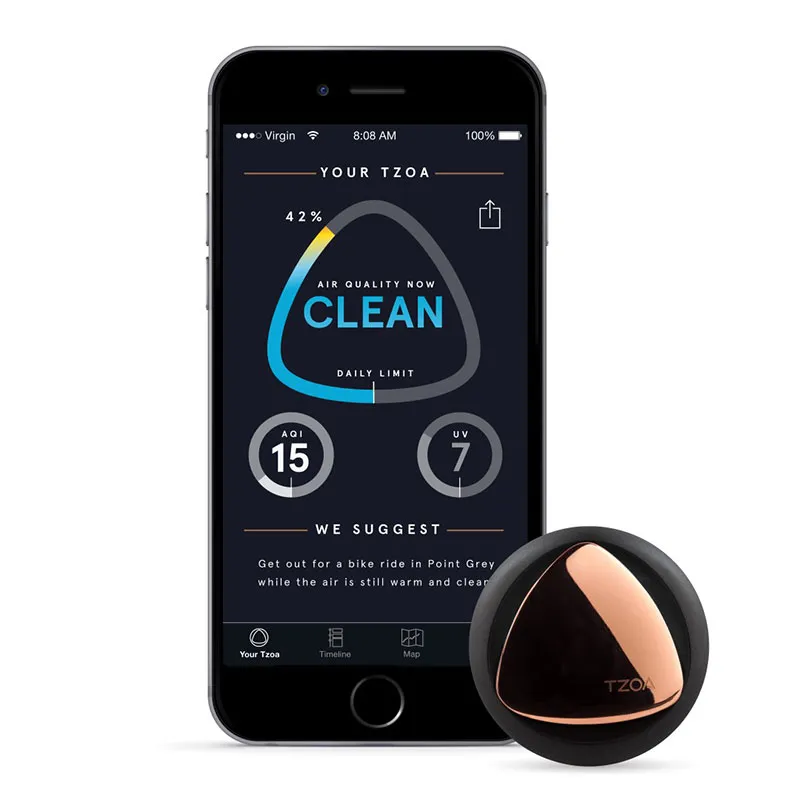With Wearable Devices That Monitor Air Quality, Scientists Can Crowdsource Pollution Maps
Emerging technology means anyone with a smartphone can become a mobile environmental monitoring station
/https://tf-cmsv2-smithsonianmag-media.s3.amazonaws.com/filer/e6/46/e646996f-0213-4556-8869-614a1f29e569/tiftzoa-j_new_ui_2.jpg)
Air pollution exposure is an invisible hazard responsible for seven million premature deaths every year, according to World Health Organization estimates.
But a new generation of wearable high-tech devices, paired with the mobile phones we carry, reveals this hazard so that users can see it in real time.
Personal environmental monitors measure air quality and other environmental data and stream that information to users who may otherwise have no idea what they are breathing. Armed with information, wearers might seek cleaner air by moving off a certain street or opening the window to a smoky room.
But these gadgets may have even more utility on a macro scale, because they deliver scads of data, never before available, to scientists who use them to map our ever-changing exposure to everything from pollutants to UV rays. That can help policy makers tackle these problems in the places they hurt people most.
Mark Nieuwenhuijsen, of the Center for Research in Environmental Epidemiology in Barcelona, Spain, is using wearable monitors to measure and map air pollution in ways that were previously impossible.
“The current method used to measure air pollution in cities is to put an air pollution monitor somewhere in the city and assume that everyone is exposed to that level of air pollution,” he explains. “However we know that there is large variability, with levels near roads being much higher than further away. People move around the city and by [tracking them] and giving them a small air pollution sensor, we can see what the air pollution levels are where they are. They vary considerably and are not the same as the air pollution monitor in the city.”
Know Your Environment
To fill demand from eco-conscious consumers and curious scientists alike, a suite of these environmental monitoring devices has appeared.
TZOA, slated for sale in late 2015, is a shiny, jewel-like sensor that can be clipped to your clothing or a purse to measure air quality, temperature, humidity, atmospheric pressure, ambient light and UV (sun) exposure—data that stream to the wearer's associated smartphone app, which then delivers real-time readings. The wearer can use this information to take action, like getting out of the sun for a while or moving to a room with better indoor air quality. Once the devices are in wide circulation, TZOA plans to stream data to a cloud that will create “environmental” maps freely available to all users.
Similarly, a device called AirBeam, available through a Kickstarter campaign but not yet being mass produced for retail sale, is designed to operate across an open-source platform called Air Casting. The palm-sized, brightly colored device is worn on a lanyard. It uses light scattering to measure particulate matter 2.5 particles, those small enough to pass through the lungs and into the bloodstream, and it crowdsources that data from individual users around the world—revealing both heavily polluted hotspots and cleaner alternative locations. AirBeam is also developing a clip-on LED device, the LiteBeam, that will alert the wearer and others in the area to pollution by glowing in different colors depending on air quality levels—from an “all clear” shade of green to a red alert.
The Lapka PEM (Personal Environment Monitor), which was one of the first such devices to hit the market in 2012, is an elegant suite of tiny sensor modules that nest together like a small 3D puzzle, and can be individually attached to phones and other devices to measure background radiation, electromagnetic field strength and humidity. The device compares current levels to normal baselines for locations, such as a typical home, street or airplane cabin. The Lapka PEM even aims to gauge how truly organic produce is by use of a probe attachment that reads the nitrate levels of different foods and compares them to benchmarked numbers.
These cutting edge devices carry price tags of several hundred dollars, which limit their use to relatively wealthy citizen scientists and shut out much of the developing world. But the Clarity device, which clips to your bag or belt with a carabiner, is a low-cost model meant to change that dynamic and make it possible to monitor air quality, en masse, in some of the world's less wealthy but heavily polluted spots, in countries such as China and India. As it travels with you, Clarity periodically samples a bit of surrounding air and deploys a tiny optic scanner to identify its pollutant particles. The device, which was created by University of California, Berkeley students, can be reserved now and should be available later in 2015 at a target price of $50 to $75.
CITISENSE—Human Pollution Monitors Map Their Urban Environments
In Europe, a large-scale effort to implement this technology for scientific research is well underway. On March 10, the CITISENSE consortium, a group of 29 institutions from 14 nations, ranging from academic think tanks to tech startup companies, met in Barcelona to make final preparations for this month’s launch of “citizen observatories” in nine cities: Barcelona, Belgrade, Edinburgh, Haifa, Ljubljana, Oslo, Ostrava, Vienna and Vitoria. This European Commission-funded project, launched in 2012, will put portable sensors in the hands of local people in the participating cities to better understand the conditions they face. The initiative aims to empower residents by giving them the tools to assess their own environment—so they might take action to improve it when needed.
As part of the program, Mark Nieuwenhuijsen and his colleagues armed 50 schoolkids with smartphones that tracked their location and physical activity (with the CalFit app) and a microAeth portable detector to continuously monitor the air's levels of black carbon—a key component of sooty pollution. The microAeth is a pocket-sized version of larger black carbon aerosol monitors. It collects air samples on a Teflon-coated glass fiber filter and performs a real-time black carbon level analysis by measuring changes in the absorption rate of light passed through the sample.
The study, published in Environmental Science & Technology in late January, examined the degree to which people’s exposure to pollution varies during the day, and tested how well pollution estimate models match our actual experience. Some intriguing results came to light.
´´We found that when [children] were traveling from home to school or back their air pollution levels were twice as high as when they were at home or school,” Nieuwenhuijsen says. “Also school exposure levels were higher than at home.”
These types of findings, which clearly communicate how we and our loved ones are exposed to pollution, are motivating. Wearable environmental monitors may raise people's pollution-awareness levels to the point where they're moved to take action on a problem that too often flies under the radar, Nieuwenhuijsen notes.
“People may use this information to organize themselves with other like-minded people to take action or go to their (local) politicians and ask that they do something about pollution,” he says.




